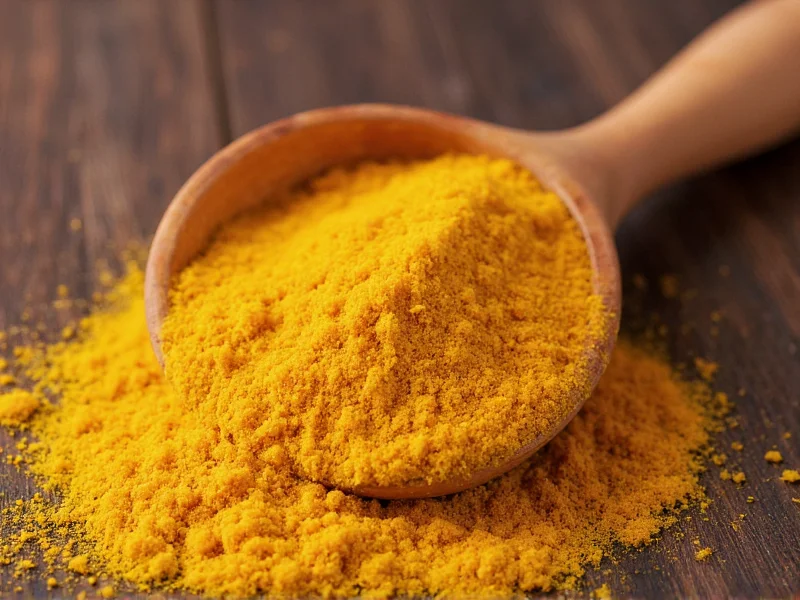Aji Amarillo—literally "yellow chili" in Spanish—is far more than just a colorful ingredient. This distinctive pepper forms the soul of Peruvian cooking, offering a complex flavor profile that's become increasingly popular worldwide. Unlike generic 'amarillo spice' blends you might find in some markets, authentic Aji Amarillo refers specifically to this unique South American chili.
Understanding Aji Amarillo: More Than Just Heat
What sets Aji Amarillo apart from other chilies is its remarkable balance. While registering between 30,000-50,000 Scoville heat units (comparable to cayenne pepper), it delivers significantly more fruitiness than pure heat. The flavor profile includes distinct notes of:
- Apricot and mango
- Passion fruit
- Green bell pepper
- Subtle floral undertones
This complexity makes it incredibly versatile in the kitchen. Unlike many chilies that primarily contribute heat, Aji Amarillo adds both spice and distinctive fruit flavors that enhance rather than overwhelm dishes.
Authentic Culinary Applications
In Peruvian cuisine, Aji Amarillo appears in countless traditional preparations. The most iconic uses include:
| Dish | Role of Aji Amarillo | Preparation Method |
|---|---|---|
| Causa Rellena | Yellow potato filling base | Mixed with mashed potatoes and lime |
| Ocopa | Primary sauce ingredient | Blended with huacatay, peanuts, cheese |
| Leche de Tigre | Ceviche marinade component | Combined with citrus, fish stock, cilantro |
| Papa a la Huancaína | Sauce foundation | Emulsified with cheese, crackers, milk |
Chefs outside Peru increasingly incorporate Aji Amarillo into fusion dishes, from seafood sauces to salad dressings. Its bright color and complex flavor work particularly well with fish, chicken, and vegetable preparations where you want noticeable but not overwhelming heat.
Finding Authentic Aji Amarillo
Locating genuine Aji Amarillo requires some know-how. The pepper grows primarily in Peru's coastal valleys, making fresh versions challenging to find outside specialty markets. Your best options include:
- Frozen pulp: Many Latin American markets sell frozen Aji Amarillo pulp in vacuum-sealed bags—this is often the most authentic option outside Peru
- Paste: Look for "pasta de aji amarillo" in glass jars, preferably without added preservatives or oils
- Dried peppers: Available from specialty online retailers, though rehydrating changes the flavor profile
- Canned peppers: Less ideal due to texture changes but work in soups and stews
When shopping for where to buy aji amarillo paste, check Latin American grocery stores, high-end supermarkets with international sections, or reputable online spice retailers. Avoid generic "amarillo spice" blends that may contain artificial colors or unrelated ingredients.
Effective Substitutes When Unavailable
If you can't find authentic Aji Amarillo, these peruvian yellow chili substitute options work with varying degrees of success:
- Yellow wax peppers + mild heat source: Combine 1 part yellow wax pepper with ½ part serrano for closest color and moderate heat
- Orange bell pepper + cayenne: For color and mild fruitiness with added heat (use sparingly)
- Guajillo + a touch of mango puree: For dried pepper applications requiring fruit notes
- Golden ghost pepper powder (diluted): Only for experienced cooks seeking intense heat with fruit notes
Remember that no substitute perfectly replicates Aji Amarillo's unique flavor balance. When using alternatives for aji amarillo pepper uses in traditional Peruvian recipes, adjust quantities carefully to maintain the dish's intended flavor profile.
Storage and Preparation Tips
Proper handling preserves Aji Amarillo's distinctive qualities:
- Store frozen pulp in airtight containers for up to 12 months
- Refrigerate opened paste and use within 3 weeks
- Always remove seeds and membranes if you want milder heat
- For best flavor, gently sauté in oil before incorporating into dishes
- Freeze fresh peppers whole, then thaw and peel when needed
When working with the peppers, wear gloves to prevent skin irritation from the capsaicin oils. The vibrant color can stain surfaces and clothing, so handle with care during preparation.
Common Misconceptions About Amarillo Spice
Several misunderstandings persist about this ingredient:
- It's extremely hot: While noticeable, its heat is moderate compared to habaneros or ghost peppers
- All yellow chilies are Aji Amarillo: Many yellow chilies exist, but true Aji Amarillo has specific flavor characteristics
- It's just for Peruvian food: Chefs worldwide now use it in diverse cuisines from Asian to Mediterranean
- Dried form works identically to fresh: Drying significantly alters the flavor profile and heat level
Understanding these distinctions helps you use Aji Amarillo more effectively in your cooking. When exploring how to use yellow chili pepper in non-Peruvian contexts, focus on its fruit-forward qualities rather than just its heat.
Why Aji Amarillo Deserves a Place in Your Pantry
More than just another chili, Aji Amarillo offers something unique: a bridge between heat and fruitiness that few other ingredients provide. Its versatility makes it valuable for both traditional Peruvian cooking and innovative fusion dishes. Whether you're making authentic peruvian aji amarillo recipes or experimenting with new flavor combinations, this vibrant pepper adds dimension that plain heat sources cannot match.
As specialty ingredients become more accessible, Aji Amarillo represents an excellent addition to any serious cook's repertoire. Start with small amounts to understand its impact, then build your confidence incorporating this remarkable pepper into your culinary creations.











 浙公网安备
33010002000092号
浙公网安备
33010002000092号 浙B2-20120091-4
浙B2-20120091-4